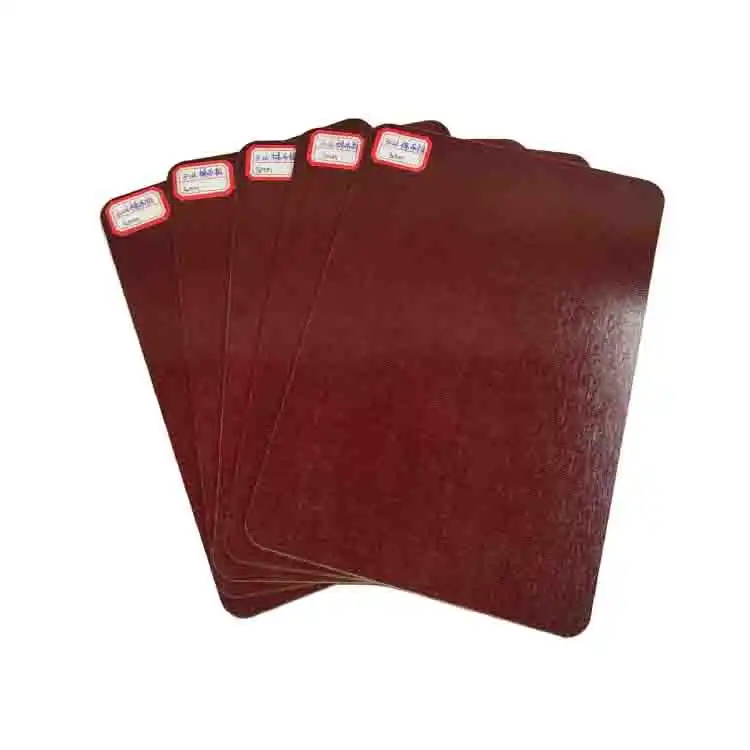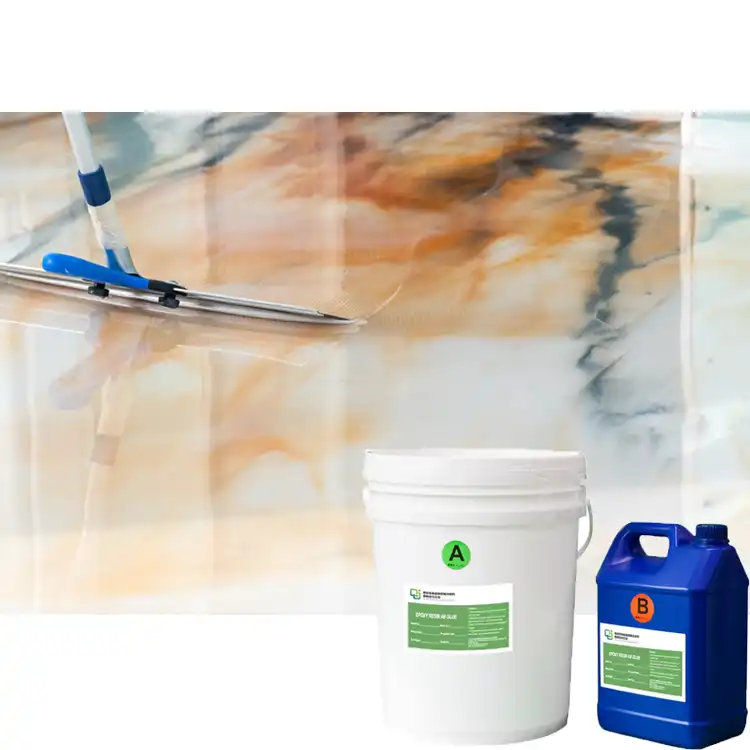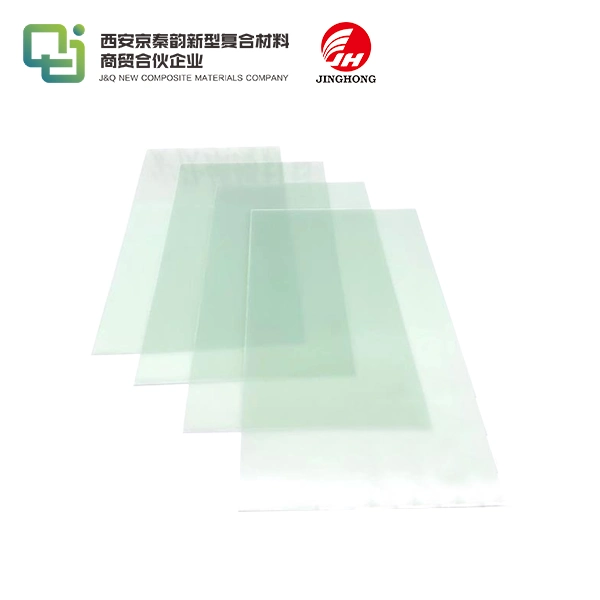How Do You Test the Quality of 3240 Epoxy Sheets?
2024-07-18 15:03:27
Introduction
Due to their excellent electrical insulation and mechanical properties, 3240 epoxy sheet is utilized extensively in industrial settings. The performance and durability of these sheets in challenging environments depend on their quality. In this blog, we'll look at various testing methods, standards and specifications, and common quality issues to figure out how to test the quality of 3240 epoxy sheets. These experiences will assist producers and clients with guaranteeing that the epoxy sheets meet the fundamental execution rules.
What Are the Key Testing Methods for 3240 Epoxy Sheets?
1.Visual Inspection and Dimensional Checks
The first steps in determining the quality of it is a visual inspection and dimensional checks. These initial tests are very important to make sure the sheets are the right size and to find any obvious flaws.
- Visual Examination: This includes inspecting the outer layer of the epoxy sheet for any apparent imperfections like breaks, air pockets, voids, or delamination. The sheets' electrical and mechanical properties may be significantly impacted by these defects. Sheets that may not meet the quality standards can be identified with the assistance of a thorough visual inspection.
- Dimensional Examining: Precise aspects are fundamental for the appropriate fitting and working of it in their applications. The sheets' thickness, length, and width are measured during dimensional checks to ensure that they adhere to the specified tolerances. Instruments like micrometers, calipers, and rulers are ordinarily utilized for this reason.
2.Mechanical Testing
Mechanical testing is fundamental to evaluate the strength and solidness of 3240 epoxy sheets. These tests reveal the material's behavior under various mechanical stresses, which is useful information.
- Elasticity: This test estimates the most extreme measure of pliable (pulling) stress the product can endure before disappointment. A tensile testing machine is used to carry out the test, pulling on the sheet until it breaks. The outcomes assist with deciding the sheet's appropriateness for applications including elastic burdens.
- Flexural Strength: The sheet's resistance to bending forces is measured using flexural strength tests. It is placed on a support span and subjected to a load in the center until it fractures for this test. The load and the sheet's dimensions are used to calculate the flexural strength.
- Influence Obstruction: The product's ability to withstand sudden impacts or shocks is evaluated through impact resistance tests. For applications where the material may be subjected to dynamic forces, this is especially crucial. The test includes hitting the sheet with a weighted pendulum or sledge and estimating the energy consumed by the material before it breaks.
3.Electrical Testing
Considering that it frequently utilized for electrical protection, electrical testing is vital to guarantee their exhibition in protecting and dielectric applications.
- Dielectric Strength: This test estimates the greatest electrical voltage the prodyct can endure without separating. A high voltage is applied to the sheet after it is positioned in between two electrodes. The dielectric strength is the voltage at which the material comes up short and permits flow to go through.
- Protection Opposition: Protection obstruction tests decide the opposition of the epoxy sheet to electrical flow. The current flow that results from applying a DC voltage to the sheet is used to measure this. Good insulating properties are indicated by a high insulation resistance.
- Resistance to Arc: Circular segment obstruction tests measure the capacity of the product to oppose the impacts of electrical arcing. In the test, an electrical arc is created on the sheet's surface, and the time it takes for the material to track or form a conductive path is measured. In high-voltage applications, a product's durability is indicated by its high arc resistance.

What Standards and Specifications Are Used for Testing 3240 Epoxy Sheets?
1. Industry Standards
It is essential to adhere to industry standards in order to guarantee the consistency and quality of products. Performance criteria and testing methods are outlined in these standards.
- Standards from the National Electrical Manufacturers Association (NEMA): NEMA gives principles to electrical protection materials, including epoxy sheets. The requirements for laminated thermosetting products, such as 3240 epoxy sheets, are outlined in the NEMA LI-1 standard. This standard covers different properties like mechanical strength, electrical protection, and warm execution.
- ASTM (American Culture for Testing and Materials) Norms: ASTM creates global guidelines for materials testing. The standard for laminated thermosetting materials, such as epoxy sheets, is ASTM D709. It gives rules to testing strategies like rigidity, flexural strength, and dielectric strength.
2.Specifications Provided by Manufacturers
Manufacturers frequently provide their own specifications for the product in addition to industry norms. Based on the intended use of the sheets, these specifications may include additional testing requirements and performance criteria.
- Material Accreditation: Material certification documents that specify the epoxy sheet' properties and performance are typically provided by manufacturers. Test results for tensile strength, flexural strength, dielectric strength, and other relevant properties might be included in these documents.
- Quality Control Conventions: Makers carry out quality control conventions to guarantee the consistency and dependability of their items. Batch testing, process monitoring, and final product inspection might be part of these protocols to make sure the products meet the requirements.

What Are Common Quality Issues and How Can They Be Identified?
1. Surface Defects
Surface defects are one of 3240 epoxy sheet' most common quality issues. The material's mechanical and electrical properties may be compromised by these flaws.
- Voids and Cracks: During the manufacturing process, air entrapment or improper curing can result in cracks and voids. These flaws have the potential to weaken the sheets' structural integrity and cause them to fail under mechanical or electrical stress.
- Delamination: Delamination happens when layers of the product independent, making holes inside the material. During lamination, poor adhesion between layers may be to blame for this problem. The dielectric strength of the sheet is diminished by delamination.
- Surface Imperfections: Handling and processing can cause surface flaws like scratches, dents, and uneven surfaces. The product's performance may not be significantly affected by these flaws, but they can affect its appearance and suitability for certain applications.
2. Mechanical Failures
Mechanical failures can be caused by a number of things, such as choosing the wrong materials, not testing them enough, or working in harsh environments.
- Brittleness: Fragility is a typical issue in epoxy sheets presented to low temperatures or UV radiation. Fragile materials are more inclined to breaking and breaking under pressure. Ordinary testing for influence obstruction and adaptability can assist with distinguishing fragile materials.
- Cracking from fatigue: When the product is repeatedly subjected to mechanical stresses over time, fatigue cracking occurs. Small cracks that grow and eventually cause failure may result from this issue. The material's resistance to cyclic loading can be evaluated with the aid of fatigue testing.
- Distorting and Deformity: Exposure to high temperatures or improper curing can cause warping and deformation. These issues can influence the layered strength and attack of the epoxy sheets in their applications. Deformed or warped sheets can be identified with regular dimensional checks.
3. Electrical Failures
Electrical failures have the potential to compromise the insulating properties of 3240 epoxy sheets, resulting in equipment malfunctions and safety risks.
- Dielectric Failure: When the product fails to protect against high voltage and allows current to pass through, dielectric breakdown occurs. Ordinary dielectric strength testing can assist with recognizing materials that might be inclined to breakdown.
- Following and Disintegration: When electrical arcing creates conductive paths on the epoxy sheet's surface, erosion and tracking occur. Short circuits can result from these issues, which can lower the material's insulating properties. In high-voltage applications, arc resistance testing can help determine the material's durability.
- Absorption of Moisture: Dampness assimilation can lessen the electrical protection properties of the product. In humid environments, this issue is particularly problematic. Protection opposition testing can assist with recognizing materials that are inclined to dampness ingestion.
In conclusion, ensuring the performance and durability of 3240 Epoxy Sheet in industrial applications necessitates quality testing. By directing intensive visual investigations, mechanical testing, and electrical testing, makers and clients can distinguish possible quality issues and guarantee that the sheets satisfy the vital guidelines and particulars. The reliability and longevity of 3240 epoxy sheets in a variety of applications can be enhanced by comprehending and addressing common quality issues.
References
1. NEMA Standards. (2023). "NEMA LI-1 Standard for Laminated Thermosetting Products." Retrieved from [NEMA](https://www.nema.org/).
2. ASTM International. (2023). "ASTM D709 - Standard Specification for Laminated Thermosetting Materials." Retrieved from [ASTM](https://www.astm.org/).
3. IEEE Xplore Digital Library. (2023). "Electrical Insulation Testing of Epoxy Resins." Retrieved from [IEEE Xplore](https://ieeexplore.ieee.org/).
4. Materials Science and Engineering. (2023). "Mechanical Properties of Epoxy Composites." Retrieved from [Materials Science and Engineering](https://mse.org/).
5. Industrial Epoxy Coatings. (2023). "Testing Methods for Epoxy Sheets." Retrieved from [Industrial Epoxy Coatings](https://industrialepoxycoatings.com/).
6. Polymer Testing Journal. (2023). "Impact and Flexural Testing of Epoxy Materials." Retrieved from [Polymer Testing Journal](https://polymertestingjournal.com/).
7. ChemResist. (2023). "Chemical Resistance Testing of Epoxy Resins." Retrieved from [ChemResist](https://chemresist.com/).
8. Applied Polymer Science Journal. (2023). "UV Resistance and Aging of Epoxy Sheets." Retrieved from [Applied Polymer Science Journal](https://apsjournal.org/).
9. Electrical Insulation Magazine. (2023). "Standards and Specifications for Epoxy Insulating Materials." Retrieved from [Electrical Insulation Magazine](https://electricalinsulationmag.com/).
10. Journal of Composite Materials. (2023). "Fatigue and Durability Testing of Epoxy Composites." Retrieved from [Journal of Composite Materials](https://compositematerialsjournal.org/).



_1732777843529.webp)



